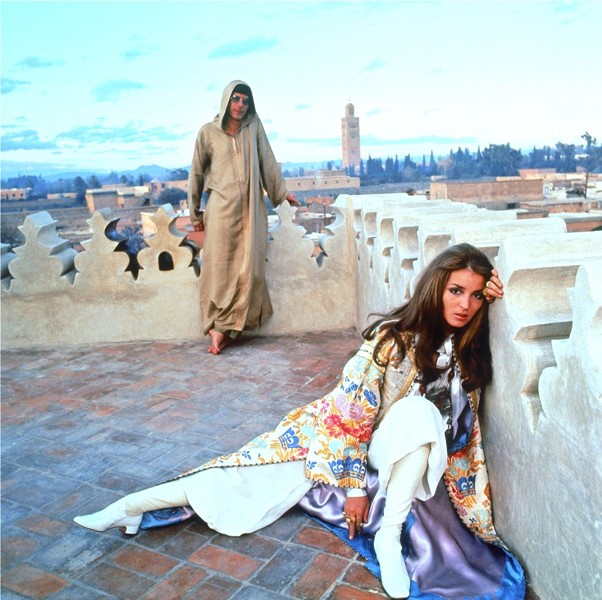Immortalised in tragedy, sixties actress and socialite Talitha Getty’s glamorous but ultimately doomed life was likened by Yves Saint Laurent to the hedonistic glitz of the privileged 1920s flappers in F. Scott Fitzgerald’s classic novel The
Immortalised in tragedy, sixties actress and socialite Talitha Getty’s glamorous but ultimately doomed life was likened by Yves Saint Laurent to the hedonistic glitz of the privileged 1920s flappers in F. Scott Fitzgerald’s classic novel The Beautiful and The Dammed. The designer famously said, "I knew the youthfulness of the sixties: Talitha and Paul Getty lying on a starlit terrace in Marrakesh, beautiful and damned, and a whole generation assembled as if for eternity where the curtain of the past seemed to lift before an extraordinary future."
The second wife of John-Paul Getty Jr., Talitha Getty died of a heroin overdose aged just 30 at the height of her celebrity, cementing her into cultural legend, passing within the same twelve-month period as Jimi Hendrix, Edie Sedgwick, and Jim Morrison. Escaping swinging London for the heady ethnicity of the Moroccan city of Marrakesh, Getty lived in a luxurious house, which she used to play host to notoriously lavish parties that included performances from magicians and local dancing boys. Originally from the Dutch East Indies, Getty’s style became a product of her global travelling picking up hand-made jewellery and clothing in rich silk with Islamic prints unique to their place of origin. Trailblazing a bohemian style that would become a reference point for countless designers in the coming decades, Getty wore Marrakesh-style kaftans, harem pants and Moroccan gjellabas. Céline creative director Phoebe Philo once described Getty’s style as a “couture of the souks”.
In a 1970 edition of US Vogue, published just months before her death, a feature titled “Talitha Getty’s Own Boutique” saw the fashion muse modelling luxuriously draping YSL gowns, which lead into a feature on “Greek” style jewellery, the Hellenic accessories fitting perfectly with her signature eclectic look. At his most recent couture show, Jean-Paul Gaultier’s extreme turbans were paired with dramatic two-piece suits fusing ethnic influences and traditionally western silhouettes — Getty’s borrowing from distant cultures and incorporating their tokens into her own European style proving to be a winning formula, still. Even minimalist trailblazer Pheobe Philo incorporated distinctly Eastern-influenced patterns into her latest Céline collection.
Text by Laura Havlin
